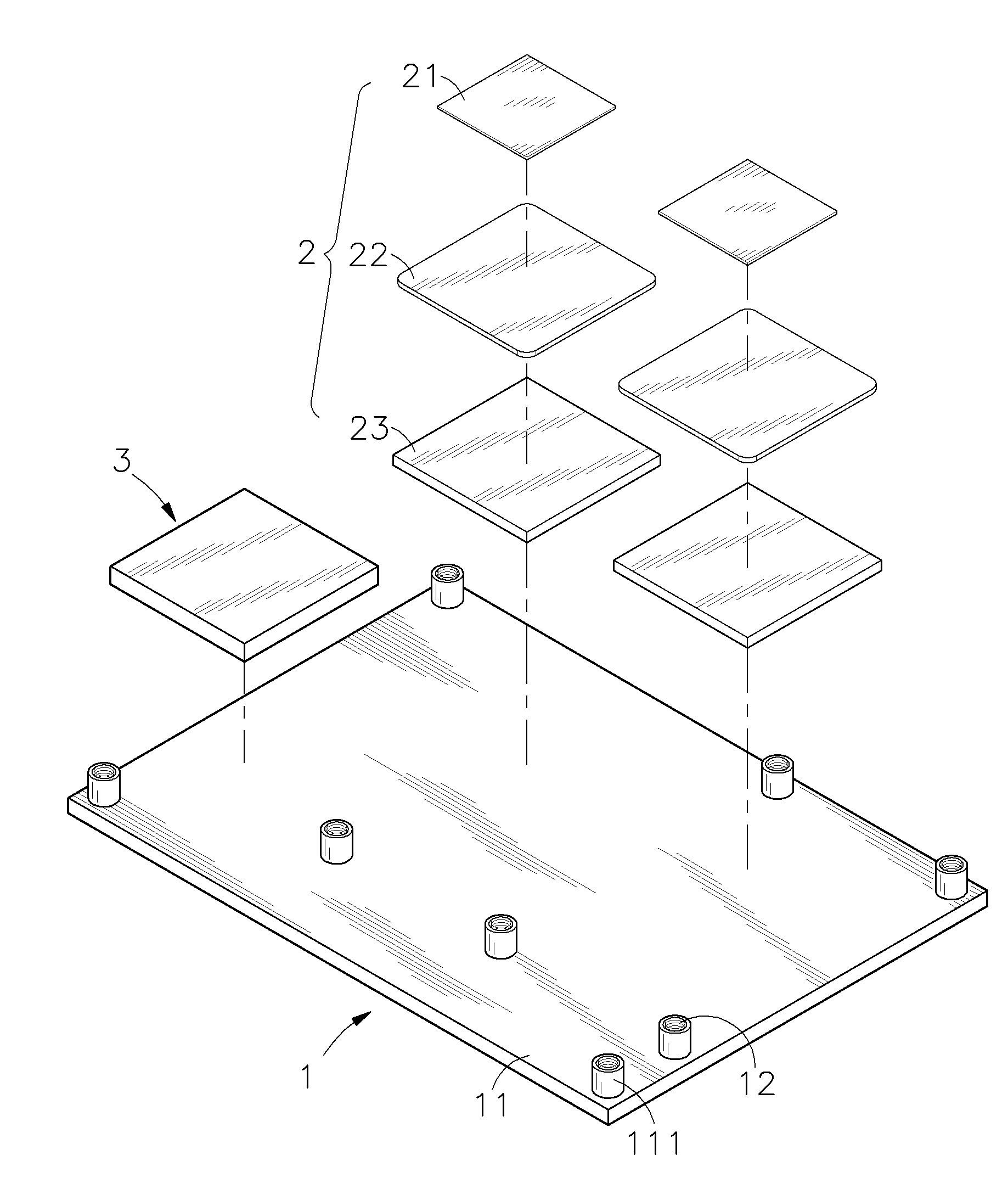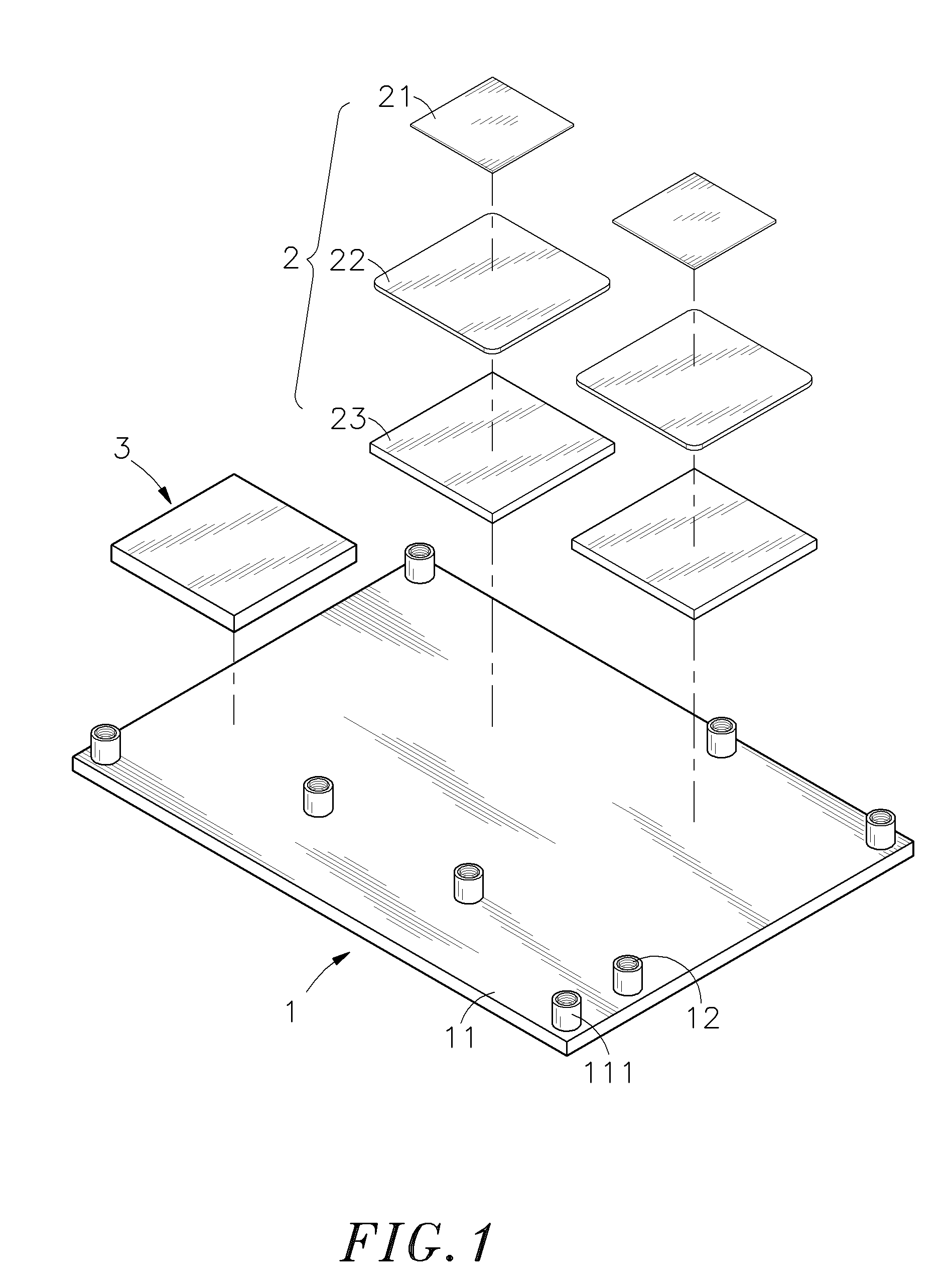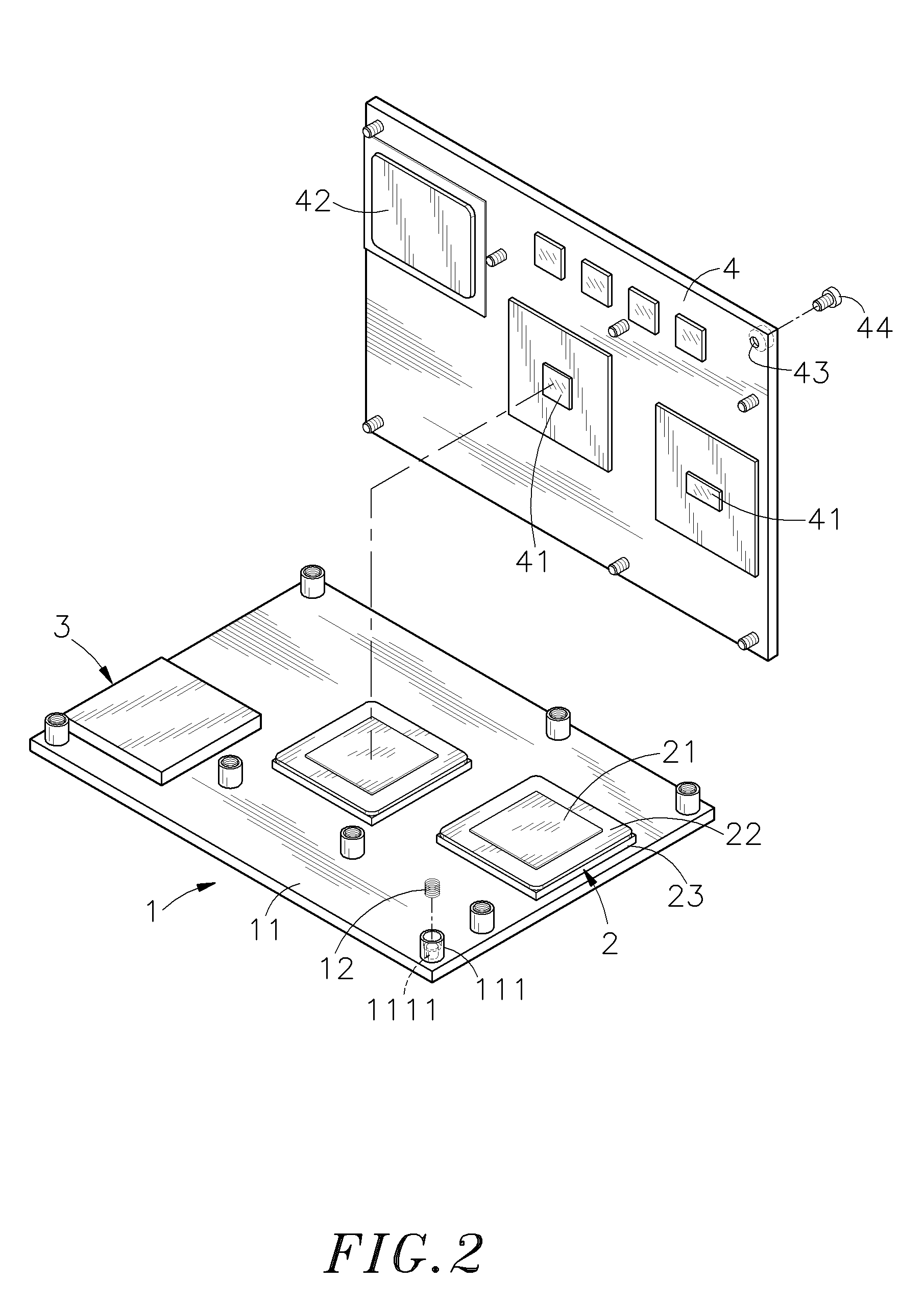Stacked heat-transfer interface structure
a heat-transfer interface and stacking technology, applied in the field of cooling modules, can solve the problems of affecting heat dissipation efficiency, and generating a lot of heat during working, so as to avoid stress damage, save material preparation, and be smooth attached to the surface
- Summary
- Abstract
- Description
- Claims
- Application Information
AI Technical Summary
Benefits of technology
Problems solved by technology
Method used
Image
Examples
Embodiment Construction
[0018]For easy understanding of the features of the present invention, we briefly explain the materials used for regular heat transfer devices and their physical properties. The heat transfer effect of a heat transfer device, such as heat sink or heat plate, is determined subject to the heat conductivity of the heat sink or heat plate. The higher the heat conductivity is, the higher the heat transfer effect will be. On the contrary, if the heat transfer device has a low heat conductivity, the heat transfer effect of the heat transfer device will be poor. However, a heat transfer of relatively higher heat conductivity has a relatively lower thermal resistance and lower wall thickness, therefore a heat transfer device having a relatively higher heat conductivity is less elastic when compared to a heat transfer device having a relatively lower heat conductivity.
[0019]Referring to FIGS. 1 and 2, a stacked heat-transfer interface structure in accordance with the present invention is show...
PUM
 Login to View More
Login to View More Abstract
Description
Claims
Application Information
 Login to View More
Login to View More - R&D
- Intellectual Property
- Life Sciences
- Materials
- Tech Scout
- Unparalleled Data Quality
- Higher Quality Content
- 60% Fewer Hallucinations
Browse by: Latest US Patents, China's latest patents, Technical Efficacy Thesaurus, Application Domain, Technology Topic, Popular Technical Reports.
© 2025 PatSnap. All rights reserved.Legal|Privacy policy|Modern Slavery Act Transparency Statement|Sitemap|About US| Contact US: help@patsnap.com



